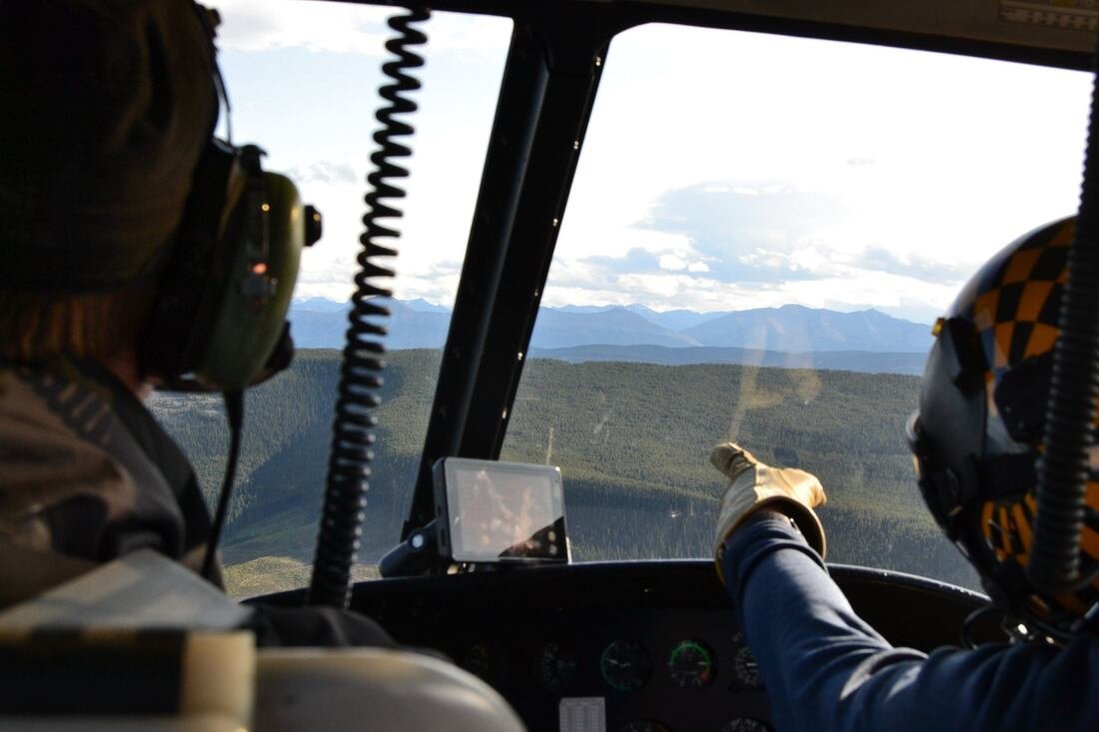Mountain Legacy Project
This year has been designed on three key pillars of wildfire understanding: fire history, ecology, and management. Prior to the design, I had experience in wildfire management and education in fire ecology, But I knew pretty much nothing about fire history. As a result, fire history has become an increasingly important focus for the project. Here’s how I’ve worked to enhance my understanding in the past few weeks:
Following a return from the Northwest Territory, I headed southwest to link up with a contact of mine, Rick Arthur, and a crew from the Mountain Legacy Project. MLP (not to be confused with My Little Pony) is a repeat photography project that uses glass-plate photographs taken from ~1880-1930 of mountain landscapes and then reshoots them from the exact location. The goal is to see the degree to which these Canadian Rocky Mountain landscapes have changed from modern human influence. It’s essentially like a landscape version of those Bowflex before-after commercials, except in this case there’s no photoshop and the before pictures tend to be healthier than the afters. Within this University of Victoria-based data collection project are a multitude of other projects. Some of these are specifically looking at how mining operations may have impacted mountains, or how floods or dams may have altered waterways. The project that I was mostly focused on was Rick’s: how the removal of indigenous tribes and their burning practices has altered the landscape. Here’s a before-after series that Rick shared with me:
One thing that stands out in these photos and was a common (often heated) topic of debate was the propagation of trees (i.e fuel) as the result of fire exclusion and fire suppression. In the age of massive deforestation, rarely does the concept that some forests are simply too overgrown enter the environmental debate. However this is a narrative that we must recognize is not one size-fit-all (Often in our current rhetoric we point to climate change as the sole driver of increasing wildfire trends and we ignore the fact that forests have deteriorated due to neglect). There may be a thing as too many trees, and old-growth forests are not always ecologically preferred. These realities are especially relevant in ecosystems such as Canada’s montane cordillera forests and the southwestern U.S Ponderosa Pine forests, where the removal of First Nation peoples has been accompanied with the removal of fire in the landscape. With the removal of these peoples and their interactions with their landscapes, combined with fire suppression policies. a significant source of ecosystem renewal was forgotten.
In their place, western management adopted a policy of fire exclusion and fire suppression. Prior to my time with MLP, I could not distinguish the two, but there is a difference. From my understanding, fire exclusion is the removal of an eco-cultural paradigm, or the practice of using low-severity (or stand-replacing) fire to promote forest and animal health. Through seasonal and intentional burning, First Nations used fire to provide fresh grass or clear corridors for ungulates, muskrats, ducks, and bison. The benefits to these prey species would radiate to their predator counterparts. Forests would also benefit as the use of low severity burn allowed for retention of the seed bank and avoid the soil sterilization brought on by the high intensity burns that occur today in ecosystems that are unadapted to them. Thus, the use of fire in this way created the healthy image of what we would conceive as a “natural” landscape. First Nations had to maintain lands in a sustainable manner as their health was directly tied to it, the managers of Yellowstone cannot make the same argument.
What about fire suppression? Well fire suppression is what I did to buy myself stuff I shouldn’t have spent money on. I think suppressing fires is one of the best jobs out there. And while it absolutely has a place in our world today, fire suppression has a problematic history. Many of us have heard the story before, maybe we should have let lightening fires burn more, or maybe we shouldn’t have stopped starting our own. In the end, the situation now is highly volatile as any ignition during windy, drought-like conditions is going to go big and preventing them from chewing through misplaced housing developments is an uphill battle. In this way, fire suppression is kind of like the antibiotic treadmill: it helps create and intensify the problem, but abandoning its use will be a catastrophe. With so many values in high fire risk areas, fire suppression must continue. In final, both approaches must be recognized. Not all fires can be put out, and not all fires can be allowed to burn. There must be a balance: suppression as well as prescription. The difficulty today is how to tip the scale back towards prescription as it is currently overloaded on the suppression side.
The balance of these two types of fire management serve as the focus of the project as the influence of these decisions are tied to the fire history and ecology behind them.
If you’ve made it this far, good job, here’s some photos for your effort:
Some side notes since my last post:
- I managed to run into a bunch of USFS crews and shots at a bar in Alberta. Got to hang out with my good buddy, Gus (I see you Bighorn Basin Sawyer)! Also fellow grad, Ian, was also there. Small world. Always good to hang out in a bar with a bunch of firefighters after they just did 16s for two weeks. Thanks for the generosity, fellas.
- Have a newfound respect for early suveryors, those guys did some insane climbing without any modern equipment. Just because they wanted good pictures.
- Alberta fire bases remind of summer camp. There are tons of games and you take your shoes off before entering the chow hall. Very different from the States.
- Saw boots are glorified rain boots.






















